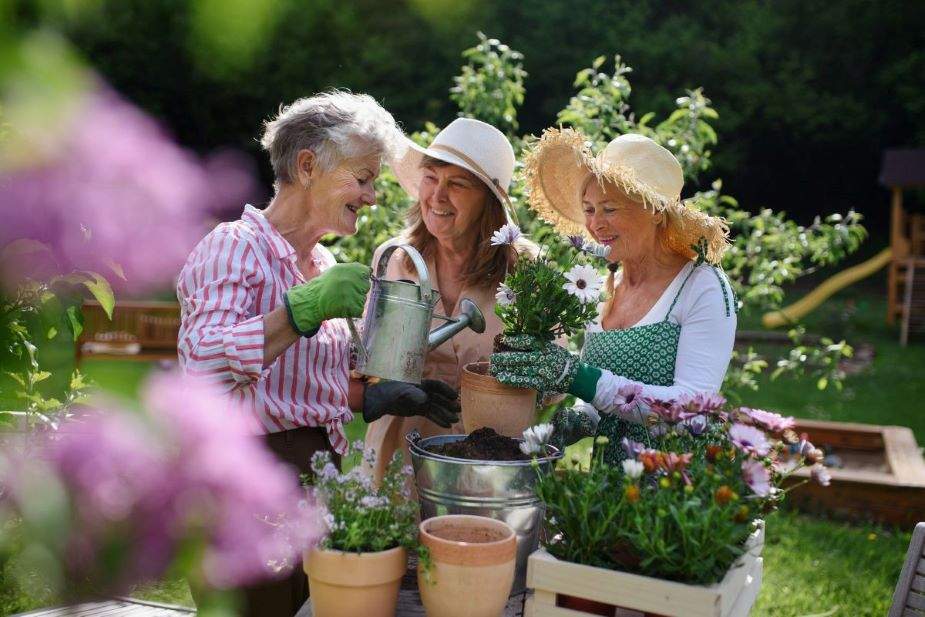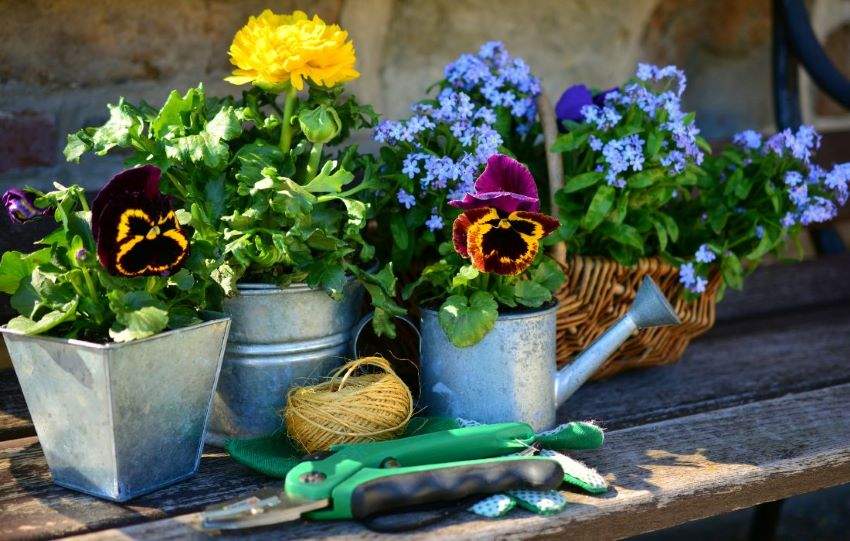There’s something undeniably special about the act of gardening. It’s like each seed we plant whispers a promise of growth, not just for itself but for us as well. In addition to providing more families with fresh vegetables, gardening can have positive benefits on your life as well.
Gardening: A Mood Booster
Being out in the sun, moving around, nurturing plants – they all improve your mood. Gardening is also a natural mindfulness practice. Mindfulness is another way to remain calm, steady, and centered no matter what’s going on.
The practice of Horticulture Therapy dates back to the 19th century. Dr. Benjamin Rush, known as the Father of American Psychology, was the first to document the positive effects of gardening. In the 1940s and 1950s, hospitalized war vets also began to use horticulture therapy. As a result, the practice gained credibility for treating a variety of diagnoses, not just mental illness.
Today, it is an accepted modality to help people learn or regain skills such as memory, cognition, task initiation, language skills, socialization, muscle strength and coordination, balance, endurance, independence, problem-solving, and following directions.
Horticulture therapists receive specific training and often work with landscape designers to create therapeutic garden spaces.
People participating in horticulture therapy experience reduced anxiety, improved attention, lower cortisol (stress hormone) levels, lower BMI, and greater life satisfaction.

If you’d like to try it on your own, here’s how to get started:
Step 1 – Start Small
An easy-to-grow indoor plant (or two) is perfect. Starting with a full garden will only add to your stress. Instead, try lucky bamboo, air plants, snake plants, rubber plants, and succulents. If you’d rather have a plant you can use, try growing herbs. Some great ones to start with are chives, mint, parsley, or thyme. If you have pets, be sure whatever plants you choose are safe for them and out of their reach. Also, consider the plant’s needs, such as light and watering.
Step 2 – Think about Your Space
Where will your plant live? Is there a lot of natural light, or is the area more shady? You’ll need to choose plants that thrive in the natural conditions you can provide. Also, create a space where you can sit and enjoy your plants. A morning cup of coffee with them is a beautiful way to start the day.
Step 3 – Go Easy
The whole point is to help you relax. Don’t push yourself to the point of physical pain. If you have back or knee issues, a raised bed can help immensely. A self-watering pot and higher tables can also be helpful for indoor plants.
Step 4 – Pick Plants That Make You Happy
Maybe you love a specific smell, or a particular plant reminds you of someone you love. Perhaps you like to be surrounded by a specific color. Find plants that bring you joy and start with those. Keep track of your garden here.
Vitamin D
Most Americans lack vitamin D, especially those living in the northern states. Vitamin D primarily comes from the sun and does not penetrate glass. Going outside to the garden provides exposure to Vitamin D. Be sure to wear sunscreen, hats, and sunglasses as appropriate for your needs.
Aerobic Exercise
The gym certainly isn’t for everyone. Nor is running or any other workout you can name. Fortunately, the moving, bending, and digging required in gardening provide excellent aerobic exercise.
Gardening is considered moderate exercise by the American Heart Association. In fact, gardening burns as many calories as you would working out at the gym. Digging, raking, and mowing are the best for burning calories, but they’re not the only ways to do so.
In addition, gardening helps improve strength and agility, muscle mass and endurance, and functional movement. One study indicates that gardening can even improve bone density. This is likely because gardening incorporates all four types of exercise: endurance, strength, balance, and flexibility.
The aerobic benefits of gardening mean that it can also help you lose weight. One study showed that gardeners weighed, on average, 11 – 16 pounds less than non-gardeners.
To increase the aerobic benefits of gardening, try these four things:
- First, improve your range of motion by increasing the arc from your body when raking or hand weeding.
- Do the “lunge and weed.” This is precisely what it sounds like. Make a lunge as you would in a typical workout, then go for that weed. If you’re right-handed, rest your left hand on your left knee (or switch it if you’re a lefty). To keep your muscles balanced, try to switch back and forth.
- Use large muscle groups. Instead of using your arm muscles, focus on your legs, butt, and torso. It burns more calories, and you’ll feel less sore the next day.
- Balance it all out. Pull the other arm in as one arm moves out, much like you would if you were curling dumbbells.
- Think of your gardening tasks in terms of reps and sets. For example, raking leaves 10 to 15 sweeps can be one set. Then rest and do something else and come back to it. It helps your body and reduces boredom and the risk of a repetitive motion injury.

Combat Loneliness
Gardening may seem like a solo activity, but with community gardens, gardening clubs, and other gardening groups, gardening can help you connect to your community both in-person and online.
Reduce Dementia Risk
A recent study showed that gardening could reduce dementia risk by 36%. In addition, digging in the dirt helps reduce seniors’ agitation and anxiety. Gardening can also increase independence and self-esteem, reduce the need for pain medications, improve strength and balance (which reduces the risk of falls), and enhance memory.
For caretakers, you can help with the following:
- creating container gardens or raised beds which are easier to access
- designing a circular garden to help prevent wandering off
- providing benches and chairs throughout the garden space
- sharing responsibility – this doesn’t mean doing the work. However, they may need prompting and physical assistance.
Connecting to the World
In addition to connecting to your community, touching the earth also connects you to the planet, the greater whole. This has been shown to create more tolerance of others and a more peaceful, accepting mindset.
Have you started your garden yet?









